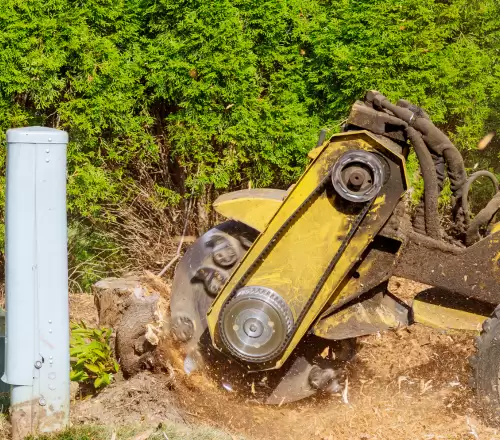Trees are a vital part of any landscape, providing shade, beauty, and even increasing property value. However, like all living things, trees require proper care to stay healthy and safe. While some minor maintenance can be handled by homeowners, certain issues demand the expertise of professional tree care services.
Ignoring warning signs can lead to tree decline, property damage, or even personal injury. In this article, we’ll explore five key signs that indicate it’s time to call in a professional arborist.
1. Visible Signs of Disease or Pest Infestation
One of the most obvious indicators that your tree needs professional tree care is the presence of disease or pests. Common symptoms include:
Discolored or wilting leaves (yellowing, browning, or premature dropping)
Unusual spots, mold, or fungus on leaves, bark, or roots
Holes in the trunk or branches (indicating borers or other pests)
Sap oozing from the bark (a sign of infection or infestation)
Some tree diseases, like Dutch elm disease or oak wilt, spread rapidly and can kill a tree within weeks. Others, such as armillaria root rot, weaken the tree’s structure, making it a hazard. A certified arborist can diagnose the issue and recommend treatments like pruning, fungicides, or pest control to save the tree.
2. Dead or Broken Branches
If you notice large dead branches or limbs that have broken off, it’s a clear sign your tree needs attention. Deadwood can fall unexpectedly, posing risks to people, pets, and property. Additionally, broken branches may indicate:
Internal decay (weakening the tree’s structure)
Storm damage (requiring proper trimming to prevent further breakage)
Improper previous pruning (leading to weak growth patterns)
A professional tree care service will safely remove hazardous branches and assess whether the tree can recover or if removal is necessary.
3. Leaning or Unstable Tree
While some trees naturally grow at an angle, a sudden lean—especially after a storm—can signal root damage or soil instability. A severely leaning tree may be at risk of falling, which could cause significant damage.
Warning signs of an unstable tree include:
Exposed roots (due to erosion or uprooting)
Cracks in the soil near the base
Mushrooms growing at the base (indicating root rot)
An arborist can determine whether cabling, bracing, or removal is the best course of action.
4. Overgrown or Poorly Shaped Trees
Trees that haven’t been pruned in years can become overgrown, leading to:
Dense canopies blocking sunlight and airflow
Crossing or rubbing branches (causing wounds and disease entry points)
Weak branch attachments (increasing storm damage risk)
Professional tree care includes structural pruning, which improves tree health, appearance, and safety. Arborists know how to trim without over-pruning (which can stress the tree).
5. Roots Encroaching on Structures or Utilities
Tree roots can extend far beyond the canopy, sometimes causing:
Cracked driveways or sidewalks
Clogged sewer lines (from invasive roots)
Foundation damage (if planted too close to a home)
If you notice raised soil, cracks near pavement, or slow drains, a professional can assess whether root pruning or tree removal is needed.
Conclusion: Don’t Wait Until It’s Too Late
Healthy trees enhance your property, but neglected ones can become hazards. If you observe disease, dead branches, leaning, overgrowth, or root problems, it’s time to call a professional tree care service. Certified arborists have the skills and tools to diagnose issues and provide safe, effective solutions—protecting both your trees and your property.
 :
https://www.pinterest.com/
:
https://www.pinterest.com/

